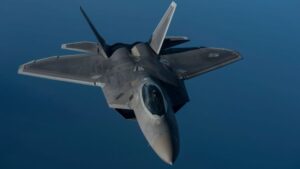Today’s SOFREP Pic of the Day is a snapshot of history. It was taken in November of 1937 during the Second Sino-Japanese War and features Chinese soldiers from the 88th Division shortly before the battle of Nanking. Rarely do I feel bad for the Chinese, but knowing what is about to happen to these men and the civilians of Nanking (or Nanjing), one can’t help but be a little choked up. The Japanese were about to perpetrate the worst, most unspeakable war crimes in the history of humanity.
For the love of God and all that’s holy, the Japanese even initiated killing contests. And this was before the massacre of Nanking.
This image is dated December 13, 1937. It shows two Japanese officers, Mukai (left) and Noda (right). The bold headline reads: “‘Incredible Record’ [in the Contest to] Behead 100 People—Mukai 106 – 105 Noda—Both 2nd Lieutenants Go Into Extra Innings”.These two bastards pictured above decided it would be a cool idea if they had a contest to see who could kill 100 people the fastest with a sword. The contest (obviously as evidenced from the image above) made the papers back home and at least four articles were published about it. Published about it, not condemning it, as if it were a baseball game or something.
According to the narrative of the time, the two got so caught up in chopping off heads that they lost count and proposed another contest; this one was to see who could be the first to take 150 heads.
Toward the end of the war, these two were taken into custody by the United States Army. We also captured Japanese Army Captain Gunkichi Tanaka, who personally killed over 300 Chinese civilians with his sword. After a trial, the three were convicted of war crimes and crimes against humanity. They were executed by firing squad on January 28, 1948, and are languishing to this day in the Ninth Circle of Hell.
The Battle of Nanking, 1937: A Historical Overview
The Battle of Nanking, also known as the Battle to Defend Nanjing, was a pivotal conflict during the Second Sino-Japanese War. Fought between December 1 and December 13, 1937, this battle saw the Chinese National Revolutionary Army, led by General Tang Shengzhi, attempt to defend the then-capital of the Republic of China, Nanjing (Nanking), from the advancing Imperial Japanese Army under General Iwane Matsui. The battle culminated in one of the most brutal massacres of the 20th century, infamously known as the Nanjing Massacre or the Rape of Nanjing.
Prelude to the Battle
Following a fierce three-month battle in Shanghai, where the Chinese and Japanese forces suffered significant casualties, the Japanese military sought to capture Nanjing as a strategic and psychological victory. Believing that taking the Chinese capital would force a swift Chinese surrender, General Matsui initiated a campaign to march from Shanghai to Nanjing. This advance was marked by intense skirmishes and significant destruction as both sides employed scorched earth tactics.
Today’s SOFREP Pic of the Day is a snapshot of history. It was taken in November of 1937 during the Second Sino-Japanese War and features Chinese soldiers from the 88th Division shortly before the battle of Nanking. Rarely do I feel bad for the Chinese, but knowing what is about to happen to these men and the civilians of Nanking (or Nanjing), one can’t help but be a little choked up. The Japanese were about to perpetrate the worst, most unspeakable war crimes in the history of humanity.
For the love of God and all that’s holy, the Japanese even initiated killing contests. And this was before the massacre of Nanking.
This image is dated December 13, 1937. It shows two Japanese officers, Mukai (left) and Noda (right). The bold headline reads: “‘Incredible Record’ [in the Contest to] Behead 100 People—Mukai 106 – 105 Noda—Both 2nd Lieutenants Go Into Extra Innings”.These two bastards pictured above decided it would be a cool idea if they had a contest to see who could kill 100 people the fastest with a sword. The contest (obviously as evidenced from the image above) made the papers back home and at least four articles were published about it. Published about it, not condemning it, as if it were a baseball game or something.
According to the narrative of the time, the two got so caught up in chopping off heads that they lost count and proposed another contest; this one was to see who could be the first to take 150 heads.
Toward the end of the war, these two were taken into custody by the United States Army. We also captured Japanese Army Captain Gunkichi Tanaka, who personally killed over 300 Chinese civilians with his sword. After a trial, the three were convicted of war crimes and crimes against humanity. They were executed by firing squad on January 28, 1948, and are languishing to this day in the Ninth Circle of Hell.
The Battle of Nanking, 1937: A Historical Overview
The Battle of Nanking, also known as the Battle to Defend Nanjing, was a pivotal conflict during the Second Sino-Japanese War. Fought between December 1 and December 13, 1937, this battle saw the Chinese National Revolutionary Army, led by General Tang Shengzhi, attempt to defend the then-capital of the Republic of China, Nanjing (Nanking), from the advancing Imperial Japanese Army under General Iwane Matsui. The battle culminated in one of the most brutal massacres of the 20th century, infamously known as the Nanjing Massacre or the Rape of Nanjing.
Prelude to the Battle
Following a fierce three-month battle in Shanghai, where the Chinese and Japanese forces suffered significant casualties, the Japanese military sought to capture Nanjing as a strategic and psychological victory. Believing that taking the Chinese capital would force a swift Chinese surrender, General Matsui initiated a campaign to march from Shanghai to Nanjing. This advance was marked by intense skirmishes and significant destruction as both sides employed scorched earth tactics.
The Fall of Nanking
By December 9, 1937, the Japanese army had reached the Fukuo Line, the final defensive position before Nanjing’s fortified walls. Despite a valiant defense, the Chinese forces, which were comprised of poorly trained and equipped soldiers, could not hold back the better-armed and more experienced Japanese troops. On December 13, Nanjing fell after the Chinese defenders’ chaotic and poorly organized retreat, leading to widespread disarray among the troops.
The Nanjing Massacre
Following the city’s capture, the Imperial Japanese Army initiated six weeks of horrific violence and atrocities against the city’s inhabitants. The massacre is characterized by indiscriminate killings, mass executions of prisoners of war, and widespread rape and looting—estimates of the death toll range from 200,000 to 300,000 civilians and disarmed soldiers.
Eyewitness accounts and photographic evidence from the time reveal the extent of the brutality: Japanese soldiers conducted killing contests (noted above), practiced bayonet techniques on live prisoners, and mutilated bodies as trophies. Women, regardless of age, were subjected to gang rapes, often followed by mutilation and murder. Even the safety zones established by Westerners in Nanjing failed to protect many civilians, as Japanese forces violated these sanctuaries with impunity.
Aftermath and Legacy
The Nanjing Massacre remains a deeply contentious and painful chapter in Sino-Japanese relations. After World War II, Japanese commanders such as General Matsui and his subordinates were tried for war crimes by the International Military Tribunal for the Far East. However, the massacre’s historical narrative continues to be a point of contention, with some Japanese nationalists and revisionists downplaying or denying the events. Today, the atrocities are memorialized at the Nanjing Massacre Memorial Hall in China, which serves as a reminder of the need for historical reckoning and reconciliation.
The Battle of Nanking and the subsequent massacre serve as stark reminders of the devastating impact of war on civilians and the enduring scars it leaves on nations. The legacy of these events continues to influence East Asia’s geopolitical and cultural landscape to this day.
—
Disclaimer: SOFREP utilizes AI for image generation and article research. Occasionally, it’s like handing a chimpanzee the keys to your liquor cabinet. It’s not always perfect and if a mistake is made, we own up to it full stop. In a world where information comes at us in tidal waves, it is an important tool that helps us sift through the brass for live rounds.



